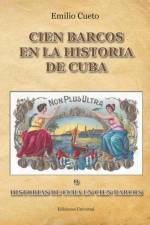av Emilio Cueto
541
EMILIO CUETO (Havana, 1944). Lawyer, collector and researcher. He lives in the United States since 1961. Author of Mialhe's Colonial Cuba (1992), Cuba in Old Maps (1999), Illustrating Cuba's Flora and Fauna (2002) La Cuba Pintoresca de Frédéric Mialhe (The Picturesque Cuba of Frédéric Mialhe) (2010), La Virgen de la Caridad del Cobre en el alma del pueblo cubano (Our Lady of Charity in the soul of the Cuban people) (2014), Camagüey en la Música (Camagüey in its Music) (2015) and Las Litografías santiagueras del Departamento Oriental de la Isla de Cuba (The lithographs from Santiago de Cuba of the Eastern Department of the Island of Cuba) (2015). Between 2008 and 2013 he collaborated with Florida International University (Miami) in the organization of concerts related to Cuban music. He has another book in preparation: Cuba en USA (Cuba in the USA) y Matanzas en la Mano (Matanzas in the Hand).CIEN BARCOS EN LA HISTORIA DE CUBA (ONE HUNDRED BOATS IN THE HISTORY OF CUBA). The main events of our History have been marked by boats. In remote times, Cuba was a barren territory ... and our first inhabitants arrived on ships. We became an island populated by Caribbean aborigines, but with Christopher Columbus' three caravels we became s a Spanish colony. And that we were until the Maine exploded in Havana, making us an independent country but very dependent on the United States. And then the Granma arrived, which routed the Island to the East and a good number of Cubans to the North. The boats of the Bay of Pigs tried, without success, to open a new chapter. All these boats made us Spanish, English and American. But, above all, they made us Cubans: With what they brought (Cachita, the shield, the flag, the Marti's Simple Verses, baseball, the butterfly, the national flower) -and what they took (emigration, sugar, the habanera)- we made our Cuba and we became the people that we are today.


